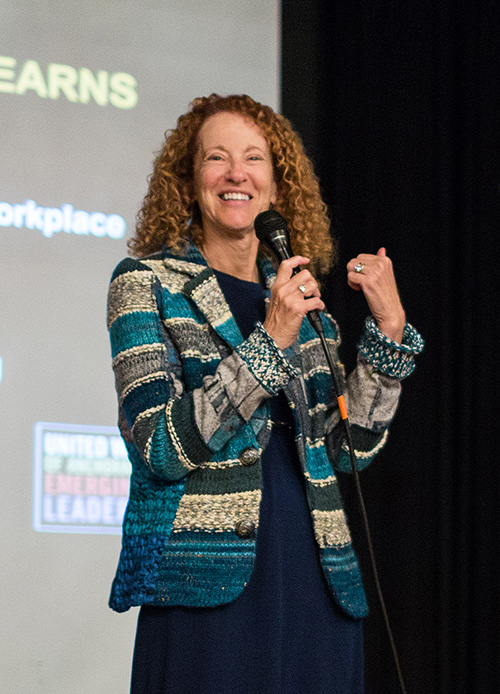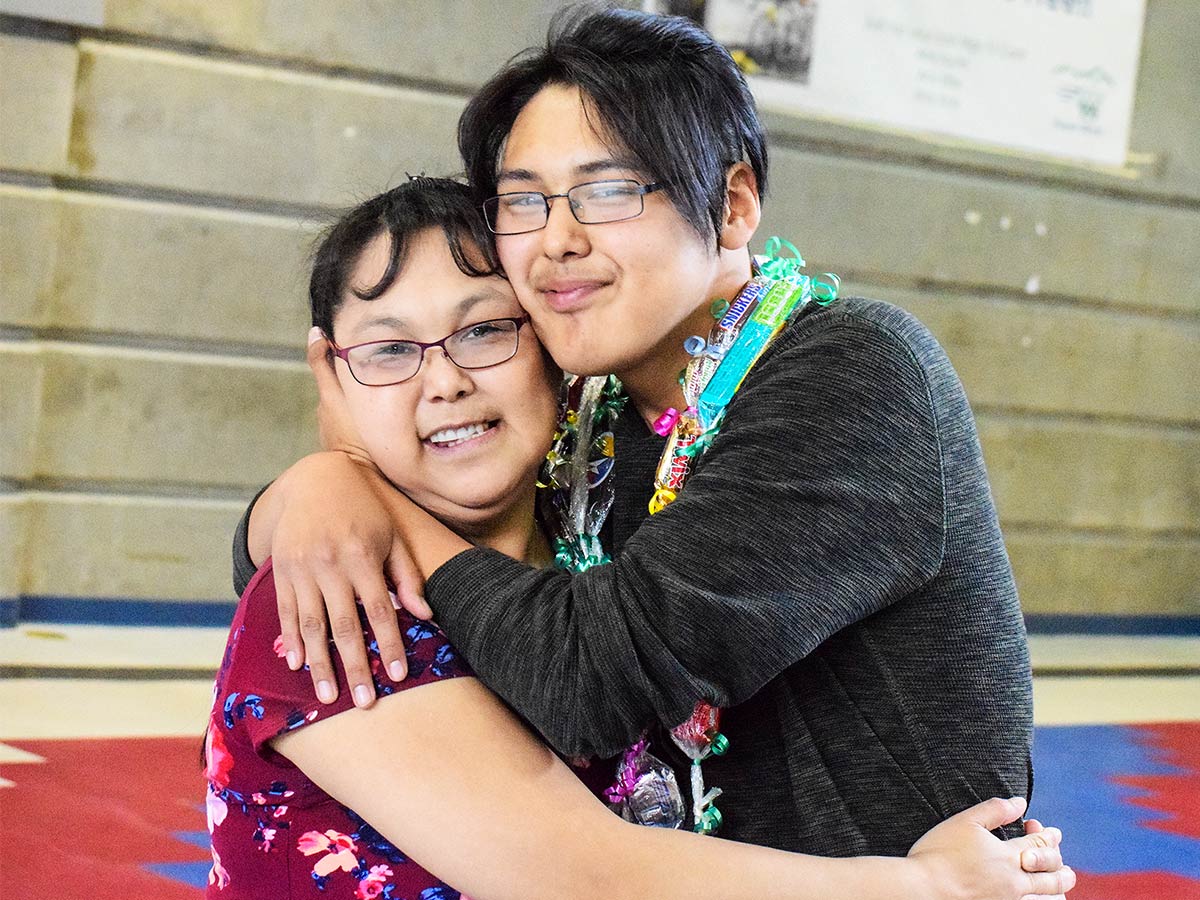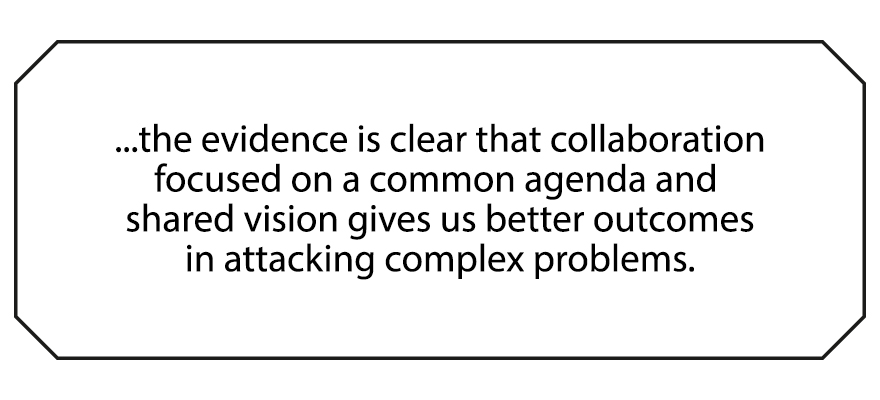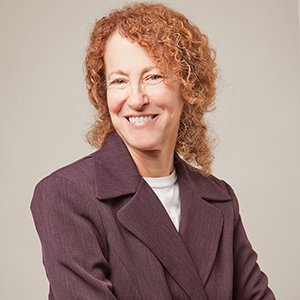
Complexity Demands Adaptive Leadership Strategies
By Michele Brown
In Anchorage, we all breathed a collective sigh of relief in August when the news media described the likely beginning of economic recovery. Job losses are slowing. Oil prices are rising. Modest job growth is on the horizon.
I’m reminded of the 1980s bumper sticker plea for one more oil boom. If we see our state revenues rise – just one more time – we promise to do things differently. We won’t blow it.
But an economic recovery alone won’t solve the social issues brought into sharp relief by the recession. As we can see from the rest of the country, a prosperous economy is not enough to reverse troubling social trends.
Those doing the hard work of moving people out of homelessness, providing treatment to overcome addictions, leveling the playing field for opportunities in education and achieving a basic level of financial security for families do not see a reprieve based solely on economic forces.
These extraordinarily complex problems have escalated in a rapidly changing community ecosystem. We are currently living in one of the largest cultural shifts in human history, and it has huge implications in our communities. We are increasingly diverse, and access to opportunity is not available to all. We are increasingly economically divided between the haves and the have-nots. And we are increasingly divided, even polarized, in our policy views and in our beliefs about whose responsibility it is to address our deep social ills.
What happens when deep social ills meet this rapidly changing landscape?
Old responses don’t work. We must adapt our leadership strategy to address this complexity.

Complexity is the New Normal
We tend to address social ills by first assigning responsibility for who should “fix” the problem and then looking for single “silver bullet” solutions. But complex problems require different management strategies and leadership.
We often assign responsibility to “fix” problems to an individual, unit of government, or social services agency. To manage complex problems, we have to recognize that change must occur simultaneously at multiple levels – the individual, the family, the community, service providers, governing bodies, etc. If we fail to recognize the need for calibrated and synchronized action across the ecosystem of these interrelated responsibilities, we will not make progress.
The second management adaptation needed is to recognize the difference between a complicated problem and a complex problem. We tend to try to address complex problems by using formulas that work for complicated problems.
Building a skyscraper is complicated. There are many challenges that must be solved – mainly in a sequential order – in order to address quantifiable variables and complete a sound structure. Once you understand the rules and processes, the likelihood you can apply that knowledge to successfully build a second skyscraper is high.
Complex problems often have scores of moving parts, multiple players that are independent of each other, and lack a “mission control.” Supporting a student to earn their high school diploma is complex. There are too many variables, too many interrelated factors to create a procedure or process that will work in every case. Every student succeeds in a way that is completely unique to him or her.
Complex Problem Solving in Action
Students come and go in person and communicate by phone, email and text in and out of Room 55 at Anchorage’s East High, where educator Barb Dexter and colleagues keep all the moving parts of a dozen classrooms and dozens of students on track.
One student’s teacher texted from another classroom to see if the student could get a cup of coffee. Barb fired up the Keurig. “If it takes coffee… we’re just glad he’s here.”

She took a call from a girl facing homelessness. “Are you able to stay where you stayed last night?”
In between texts, emails and arranging rides for students, she gave one boy a quiz on the fly, reading from a list of prominent Americans of the 1920s and 30s.
These students receive support from Back on Track, a collaboration of United Way of Anchorage, Covenant House, Anchorage School District and AT&T. It’s designed for students at the highest risk of dropping out. Barb and her colleagues manage – not control – the complexity of their students’ realities by providing the right support at the right time.
Three things stand out:
First, communication. Communication is omni-directional and constant.
Second, a shared focus on a well-defined outcome, which in this case is each student achieving a diploma.
Third, collaboration. Who has the wherewithal to act now? If we’re stuck, how do we get unstuck for the sake of the student we’re trying to help?

Managing for Complexity
Driving change for complex problems requires a specific skillset for leaders focused on the painstaking and detailed work of aligning the independent players around a common solution.
- Relationship building – Managing in complexity requires getting independent players to all move together. Leaders should prioritize quality relationships.
- Facilitating a shared vision of success – The ability to lead a group to agreement on what success looks like. This helps the independent players see their unique roles, eliminates duplication of effort and leads to the development of smart benchmarks and short-term goals.
- System understanding – Leaders for complex projects should be able to synthesize data and information to see the big picture, flush out the interrelated and emergent factors that must be addressed, identify positive correlations between effort/inputs and outcomes, and ensure all the players share in lessons and best practices as they emerge.
- System adaptation – We may not “solve” complex problems, but we can continually try, learn and adapt through collective analysis and have greater impact.

Collaborators often come to the table with their own procedures and protocols that can frustrate nimble responses. But the evidence is clear that collaboration focused on a common agenda and shared vision gives us better outcomes in attacking complex problems.
Long-range change requires long-range cooperation. Different names describe it: Collective impact. Ecosystem management. Connective tissue. In our shop, we believe it fits well with the words “Live United.”

Michele Brown is President of United Way of Anchorage, a community of donors, advocates, volunteers and partners who fight for the health, education, and financial stability of every person in Anchorage, Alaska. During her tenure, Michele has helped build collaborations leading to improvement in high school graduation, family financial stability, and access to health care. Michele has a J. D. from the University of California Davis and a BA in philosophy and humanities from the University of California Berkeley.
Michele Brown
President
United Way of Anchorage